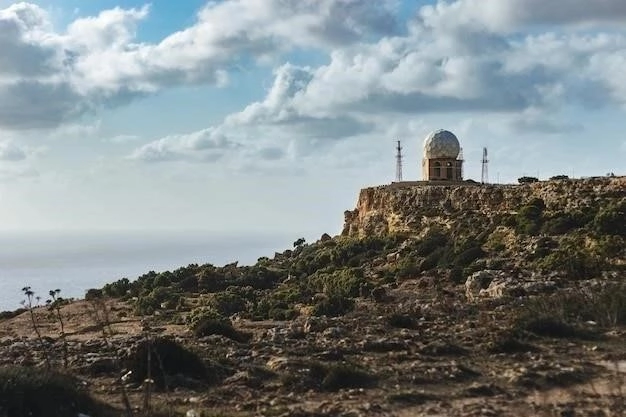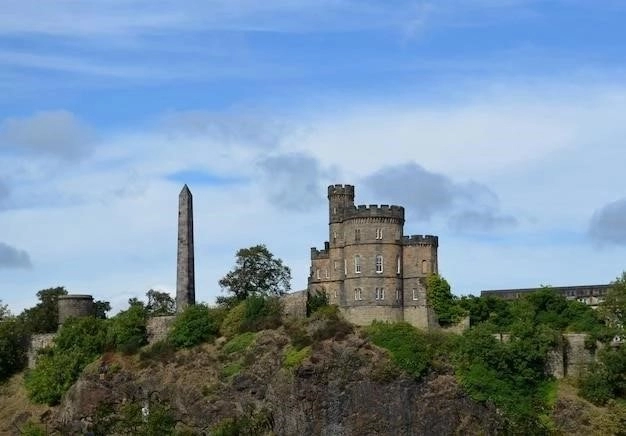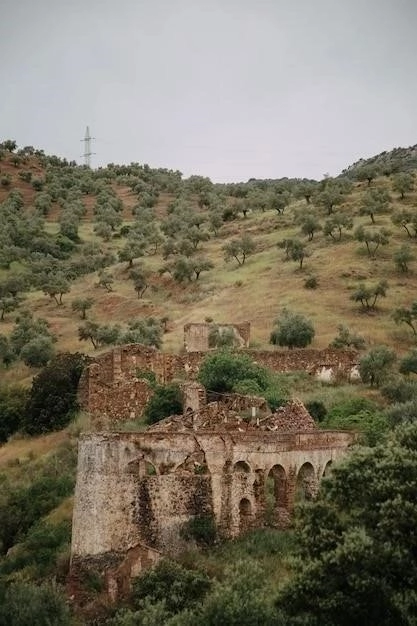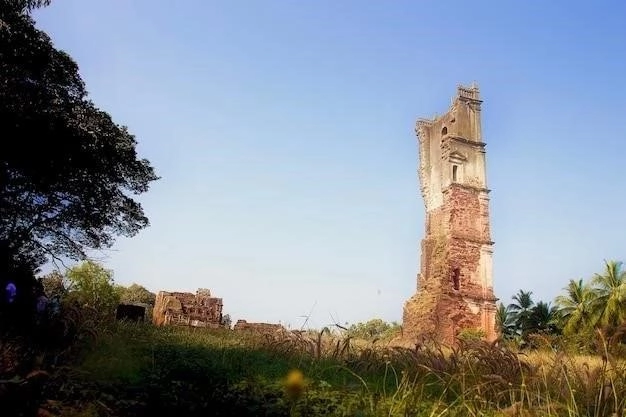Nestled amidst the rugged Sahyadri Mountains‚ approximately 30 kilometers southwest of Pune‚ India‚ stands the formidable Sinhagad Fort. More than just a formidable stone edifice‚ Sinhagad‚ meaning “Lions Fort” in Marathi‚ is a testament to valor‚ strategy‚ and the indomitable spirit of the Marathas. Its history is a tapestry woven with tales of epic battles‚ valiant sacrifices‚ and the enduring legacy of Chhatrapati Shivaji Maharaj.
Early History and Strategic Significance
The forts origins can be traced back over 2‚000 years‚ initially known as Kondhana‚ named after the sage Kaundinya. Its strategic location‚ perched atop a steep cliff with sheer drops on three sides‚ made it an impregnable fortress‚ coveted by various rulers throughout history. The fort changed hands several times‚ from the Mauryas to the Chalukyas‚ the Bahmani Sultanate‚ and eventually‚ the Mughals.
The Rise of the Marathas and the Battle of Sinhagad
The mid-17th century marked a turning point in the history of Sinhagad and‚ indeed‚ of India. Chhatrapati Shivaji Maharaj‚ the legendary Maratha warrior king‚ recognized the forts strategic importance in his campaign to establish an independent Maratha empire. In 1670‚ Sinhagad was under the control of the Mughal Empire‚ representing a significant obstacle in Shivaji Maharajs path.
The recapture of Sinhagad is one of the most celebrated chapters in Maratha history. Entrusted with this vital mission was Tanaji Malusare‚ a close confidante and a valiant commander in Shivaji Maharajs army. The ensuing Battle of Sinhagad is the stuff of legends.
Tanajis Valor and the Ultimate Sacrifice
Tanaji‚ along with his troops‚ scaled the forts sheer cliffs at night‚ aided by a monitor lizard‚ or “ghorpad‚” according to folklore. The Marathas fought with unmatched bravery‚ eventually wresting control of the fort from the Mughals. However‚ the victory came at a heavy price. Tanaji Malusare fell in battle‚ his valor forever etched in the annals of history.
Upon hearing of Tanajis death‚ Shivaji Maharaj‚ though victorious‚ was overcome with grief‚ famously lamenting‚ “Gad ala pan Sinha gela” – “We have gained the fort‚ but lost the lion.” This poignant statement underscores the depth of Tanajis sacrifice and his importance to Shivaji Maharaj and the Maratha cause.
Sinhagad under the Marathas and Beyond
Following its capture‚ Sinhagad remained a crucial stronghold for the Marathas for over a century. It served as a strategic military base and played a vital role in the Anglo-Maratha Wars. After the fall of the Maratha Empire‚ the British recognized the forts strategic importance and occupied it until Indias independence in 1947.
Sinhagad Today: A Legacy of History‚ Nature‚ and Remembrance
Today‚ Sinhagad stands as a proud symbol of Maratha valor and a popular tourist destination. Visitors from all over the world are drawn to its historical significance‚ stunning views‚ and the opportunity to trek through the picturesque Sahyadri Mountains.
Exploring the Fort
Within the forts walls lie remnants of its glorious past. Key attractions include:
- Tanaji Malusare Memorial: A tribute to the braveheart who laid down his life for the forts recapture.
- Rajaram Chhatrapatis Tomb: The final resting place of Shivaji Maharajs son and successor.
- Amruteshwar Temple: An ancient temple dedicated to Lord Shiva;
- Military Stables: A glimpse into the forts military past.
- Pune Darwaza: One of the main entrances to the fort‚ offering panoramic views of the surrounding valleys.
- Kalyan Darwaza: Another historic entrance‚ known for its architectural features.
Trekking to Sinhagad: An Exhilarating Experience
For adventure enthusiasts‚ trekking to Sinhagad is a rewarding experience. The most popular trekking route starts from the base village of Atkarwadi and takes about 1.5 to 2 hours to reach the fort. The trail winds its way through dense forests‚ offering breathtaking views of the surrounding hills and valleys.
Tips for Visiting Sinhagad
- The best time to visit Sinhagad is during the monsoon season (June to September) when the weather is pleasant‚ and the surroundings are lush green.
- Carry sufficient water and snacks as there are limited options available at the top.
- Wear comfortable footwear suitable for trekking.
- Start your trek early in the morning to avoid the midday heat.
- Be mindful of the monkeys‚ which can be notorious for snatching food.
Conclusion
Sinhagad Fort stands as a testament to Indias rich history‚ a symbol of resilience‚ courage‚ and sacrifice. Its imposing structure‚ perched atop a hill‚ continues to inspire awe and wonder. Whether you are a history enthusiast‚ a nature lover‚ or an adventure seeker‚ a visit to Sinhagad is an experience that will stay with you long after you have descended from its majestic heights.
Sinhagad Fort: A Legacy of Resilience and Architectural Ingenuity
Beyond its military significance‚ Sinhagad Fort stands as a testament to architectural ingenuity and strategic urban planning. The forts design incorporates natural defenses with man-made fortifications‚ creating a formidable stronghold capable of withstanding sieges and assaults.
Architectural Highlights and Fortifications:
- Strategic Location: The forts location atop a steep‚ isolated cliff‚ accessible only by a narrow winding path‚ made it naturally defensible;
- Fortifications and Walls: Massive stone walls‚ several meters thick and reinforced at strategic points‚ encircle the fort‚ providing robust protection.
- Gateways and Bastions: Multiple gateways‚ including the Pune Darwaza and Kalyan Darwaza‚ were strategically placed and fortified with bastions for enhanced defense.
- Water Management System: An intricate system of tanks and cisterns within the fort collected and stored rainwater‚ ensuring a sustainable water supply during prolonged sieges.
Conservation Efforts and Challenges
Recognizing the historical and cultural importance of Sinhagad Fort‚ efforts are underway to preserve and conserve this architectural marvel. The Archaeological Survey of India (ASI) has undertaken initiatives to restore and maintain the forts structural integrity.
However‚ challenges remain in balancing conservation with increasing tourism. Sustainable tourism practices‚ visitor management strategies‚ and efforts to raise awareness about the forts historical significance are crucial for its long-term preservation.
Sinhagad Fort: A Timeless Emblem of Maratha Heritage
In the annals of Indian history‚ Sinhagad Fort occupies a place of prominence. It is a poignant reminder of the Maratha Empires valor‚ strategic brilliance‚ and the sacrifices made in the pursuit of independence. Today‚ as we marvel at its towering ramparts and contemplate the echoes of history within its walls‚ Sinhagad Fort serves as a timeless emblem of Maratha heritage‚ inspiring generations to come.
The Enduring Symbolism of Sinhagad and its Relevance Today
Sinhagad Fort transcends its physicality to represent a powerful symbol in the collective consciousness of the Maratha people‚ and indeed‚ all Indians. It embodies the spirit of resistance against oppression‚ the valor of warriors who fought for their homeland‚ and the strategic acumen that characterized the Maratha Empire.
Beyond a Tourist Destination: A Source of Inspiration and Education
Sinhagad stands as a living classroom for history enthusiasts‚ military strategists‚ and anyone seeking to understand the complexities of Indias past. Educational tours‚ guided walks‚ and historical re-enactments can further enhance the visitor experience‚ fostering a deeper appreciation for the sacrifices made by those who came before us.
Key Areas of Focus for Future Research and Exploration:
- Military Architecture and Engineering: In-depth studies of the forts fortifications‚ water management systems‚ and strategic design can provide valuable insights into Maratha military architecture and engineering prowess.
- Social and Cultural Life within the Fort: Research into the daily lives of the soldiers‚ civilians‚ and rulers who resided within Sinhagad can shed light on the social and cultural dynamics of the time.
- Ecological Significance and Biodiversity: The fort and its surrounding forests are home to diverse flora and fauna. Scientific studies and conservation efforts can help protect this delicate ecosystem for future generations.
Preserving Sinhagad for Posterity: A Shared Responsibility
Preserving Sinhagad Fort for future generations requires a concerted effort from government bodies‚ conservationists‚ local communities‚ and tourists alike. Responsible tourism‚ sustainable development practices‚ and continued research are essential to ensure that this historical treasure continues to inspire and educate for centuries to come.
Collaborative Initiatives for Sustainable Preservation:
- Community-Based Tourism Models: Involving local communities in tourism initiatives can generate economic opportunities while promoting responsible visitor behavior and cultural preservation.
- Technological Advancements in Conservation: Utilizing modern technology‚ such as 3D mapping‚ digital documentation‚ and non-invasive restoration techniques‚ can aid in the precise and sustainable conservation of the forts structures.
- Educational Outreach Programs: Implementing educational programs for schools‚ colleges‚ and the general public can foster a sense of ownership and responsibility towards the forts preservation.
Conclusion: Sinhagad – A Beacon of History‚ Culture‚ and National Pride
Sinhagad Fort‚ with its captivating history‚ architectural grandeur‚ and symbolic significance‚ stands as a testament to Indias rich cultural heritage. As we move forward‚ it is our collective responsibility to ensure its preservation‚ not just as a relic of the past‚ but as a vibrant symbol of national pride‚ resilience‚ and the enduring spirit of humanity. By studying its past‚ we gain insights into our present and shape a future where history continues to inspire and guide us.
Sinhagad Fort: A Continued Exploration of its Significance
Moving beyond the tangible aspects of Sinhagad Forts construction and strategic positioning‚ it becomes essential to delve deeper into the intangible facets that contribute to its enduring relevance in the 21st century. Sinhagad transcends its identity as a mere historical monument and transforms into a potent symbol of cultural memory‚ national identity‚ and a source of inspiration for contemporary society.
Sinhagad as a Cultural Touchstone: Bridging the Past and Present
The forts image is deeply embedded within the cultural landscape of Maharashtra and India as a whole. It features prominently in literature‚ poetry‚ and folk songs‚ often romanticized as a place of valor and sacrifice. This cultural resonance fosters a sense of shared heritage and collective memory‚ connecting present generations to the struggles and triumphs of their forefathers.
Exploring the Multifaceted Significance of Sinhagad:
- Symbol of Resistance and Independence: Sinhagads history of changing hands‚ of being fiercely defended and captured‚ resonates with Indias broader struggle for independence. It serves as a powerful reminder of the nations resilience against external forces.
- A Testament to Military Strategy and Tactics: The forts design and the battles fought there offer invaluable lessons in military history and strategy. Sinhagad serves as a case study for military historians and strategists‚ illustrating the principles of defensive warfare and the importance of geographical advantage.
- A Canvas for Artistic Expression and Interpretation: Sinhagads dramatic setting‚ steeped in history and legend‚ has inspired generations of artists‚ writers‚ and filmmakers. It continues to be a source of creative inspiration‚ with its stories retold and reinterpreted through various artistic mediums.
Sinhagad in the 21st Century: Balancing Preservation and Progress
As India progresses into the 21st century‚ Sinhagad Fort faces the challenge of balancing its historical and cultural significance with the demands of modernization and development. It is crucial to adopt a holistic approach that prioritizes conservation while also ensuring accessibility and fostering a deeper understanding of the forts importance.
Sustainable Strategies for the Future of Sinhagad:
- Investing in Conservation Technology: Utilizing cutting-edge technology‚ such as laser scanning and 3D modeling‚ can aid in the accurate documentation‚ preservation‚ and virtual reconstruction of the fort‚ ensuring its legacy for future generations.
- Promoting Responsible Tourism Practices: Implementing sustainable tourism models that prioritize visitor management‚ minimize environmental impact‚ and engage local communities will be crucial for preserving Sinhagads delicate ecosystem and cultural integrity.
- Integrating Sinhagad into Educational Curricula: Incorporating the forts history and significance into school and university curricula can foster a sense of appreciation and ownership among younger generations‚ ensuring the continued relevance of Sinhagad in the future.
Conclusion: Sinhagad ౼ An Enduring Legacy for Generations to Come
Sinhagad Fort‚ with its captivating history‚ architectural brilliance‚ and profound symbolism‚ stands as a testament to the enduring spirit of humanity. By embracing sustainable practices‚ investing in research and conservation‚ and fostering a deeper understanding of its significance‚ we can ensure that Sinhagad continues to inspire‚ educate‚ and captivate generations to come‚ solidifying its place as a timeless emblem of Indias rich cultural heritage.

Delving Deeper: Untapped Research Avenues at Sinhagad Fort
While Sinhagad Fort has captured the imagination of historians and enthusiasts alike‚ much remains to be explored and understood about this historical gem. Moving beyond the well-trodden paths of military history and architectural analysis‚ untapped research avenues hold the potential to reveal a more nuanced and comprehensive understanding of Sinhagads significance within the larger tapestry of Indian history and culture.
1. Unveiling the Social Fabric: Life Within the Fort Walls
Beyond the grand narratives of battles and conquests‚ the daily lives of the people who inhabited Sinhagad remain largely unexamined. This unexplored territory offers a rich vein for future research:
- Social Stratification and Hierarchy: Investigating the social structures within the fort‚ examining the roles of soldiers‚ artisans‚ women‚ and children‚ can shed light on the complexities of life within a confined‚ militarized space.
- Economic Activities and Trade Networks: Research into the economic activities conducted within the fort‚ including agriculture‚ craft production‚ and trade routes‚ can reveal Sinhagads role in the regional economy and its connections to the wider world.
- Cultural Practices and Religious Syncretism: Analyzing the religious practices‚ festivals‚ and artistic expressions within the fort can illuminate the cultural interactions and syncretism that occurred within this melting pot of diverse communities.
2. Sinhagads Environmental History: A Dialogue Between Nature and Culture
Examining the forts relationship with its natural surroundings offers a unique perspective on the interconnectedness of human history and environmental change:
- Resource Management and Sustainability: Investigating how the forts inhabitants managed resources like water‚ food‚ and building materials can provide insights into sustainable practices of the past and their relevance for contemporary environmental challenges.
- Impact of Conflict on the Landscape: Analyzing the environmental impact of battles‚ sieges‚ and periods of peace can reveal how warfare and political instability have shaped the landscape surrounding Sinhagad over centuries.
- Biodiversity and Conservation Efforts: Documenting the flora and fauna within and around the fort can inform contemporary conservation efforts and contribute to our understanding of the regions ecological history.
3. Digital Humanities and Sinhagad: Unlocking New Perspectives
Leveraging the power of digital tools and methodologies can revolutionize research on Sinhagad Fort‚ opening up new avenues for exploration and analysis:
- 3D Modeling and Virtual Reconstruction: Creating detailed 3D models of the fort can aid in conservation efforts‚ provide virtual access to researchers and the public‚ and enable virtual reconstructions of past events and structures.
- Geospatial Analysis and Mapping: Utilizing Geographic Information Systems (GIS) to map historical data‚ such as troop movements‚ battle formations‚ and archaeological findings‚ can reveal spatial patterns and relationships previously hidden within traditional historical narratives.
- Network Analysis and Social Connections: Applying network analysis techniques to historical records‚ such as letters‚ trade documents‚ and administrative records‚ can illuminate the social networks‚ power dynamics‚ and cultural exchanges that shaped life at Sinhagad.

Conclusion: A Continual Journey of Discovery
Sinhagad Fort‚ with its multifaceted history and enduring legacy‚ offers a fertile ground for future research and interdisciplinary collaborations. By embracing innovative methodologies and venturing beyond traditional boundaries‚ scholars and enthusiasts alike can contribute to a more nuanced and comprehensive understanding of this historical treasure‚ ensuring that Sinhagad continues to inspire and intrigue generations to come.

4. Material Culture and Archaeology: Unearthing Sinhagads Hidden Narratives
The physical remnants of the past‚ lying buried beneath the surface or hidden within the forts walls‚ hold invaluable clues to understanding the lives and practices of those who lived and worked at Sinhagad. Archaeological investigation‚ coupled with material culture studies‚ can offer valuable insights:
- Excavations and Stratigraphic Analysis: Systematic archaeological excavations within the forts precincts can reveal layers of occupation‚ uncovering artifacts and architectural features that shed light on different periods of Sinhagads history.
- Ceramic Analysis and Trade Patterns: Studying the styles‚ manufacturing techniques‚ and distribution patterns of pottery shards found at the site can provide insights into trade networks‚ cultural exchanges‚ and the daily lives of the forts inhabitants.
- Military Technology and Weaponry: Analyzing excavated weapons‚ armor‚ and defensive structures can provide a deeper understanding of the military technology employed at Sinhagad‚ shedding light on siege warfare tactics and the evolution of military architecture.
5. Sinhagad in the Public Imagination: Memory‚ Heritage‚ and Representation
Sinhagad Fort is not merely a static historical site but a living entity‚ continually reinterpreted and reimagined through the lens of memory‚ heritage‚ and cultural representation. Examining these dynamic processes is crucial to understanding the forts enduring significance:
- Oral Histories and Local Narratives: Collecting and analyzing oral histories from communities living around Sinhagad can provide invaluable insights into local perspectives on the forts history‚ legends‚ and significance in their cultural memory.
- Representations in Literature and Art: Examining how Sinhagad Fort has been depicted in literature‚ poetry‚ paintings‚ and films can reveal evolving interpretations of the forts historical significance and its role in shaping regional identity.
- Heritage Management and Tourism Development: Analyzing how Sinhagad is presented to tourists‚ the narratives constructed‚ and the conservation strategies employed can offer insights into the challenges and opportunities of managing heritage sites in the 21st century.

Conclusion: Sinhagad – A Catalyst for Interdisciplinary Inquiry
Sinhagad Fort stands as a microcosm of Indias rich and complex past‚ offering fertile ground for interdisciplinary research that transcends traditional academic boundaries. By embracing collaborative approaches‚ incorporating new technologies‚ and engaging with diverse stakeholders‚ scholars can unlock the forts multifaceted narratives‚ ensuring that Sinhagad continues to inspire curiosity‚ ignite imaginations‚ and deepen our understanding of the human story for generations to come.
6. Sinhagad and the Wider Political Landscape: Power‚ Conflict‚ and Control
Sinhagad Forts strategic location and formidable defenses rendered it a coveted prize in the tumultuous political landscape of medieval and early modern India. Analyzing its role in regional power struggles offers crucial insights into the dynamics of conflict‚ diplomacy‚ and territorial control:
- Shifting Alliances and Dynastic Rivalries: Examining the forts passage through the hands of various rulers—from the early Yadava dynasty to the Bahmanis‚ the Mughals‚ and finally the Marathas—can illuminate the complex web of shifting alliances‚ betrayals‚ and dynastic rivalries that defined the Deccan Plateaus political history.
- Military Strategies and Siege Warfare: Sinhagad witnessed numerous sieges and battles throughout its existence. Analyzing these military campaigns‚ including the famed Battle of Sinhagad in 1670‚ can shed light on evolving siege warfare techniques‚ military organization‚ and the strategic importance of fortifications in shaping political outcomes.
- Diplomacy‚ Treaties‚ and Political Negotiations: Beyond military confrontations‚ Sinhagads history is also marked by instances of diplomacy‚ treaties‚ and political negotiations. Investigating these events can reveal the nuanced strategies employed by rulers to secure their interests‚ maintain power‚ and forge alliances in a volatile political environment.
7. Economic Life and Trade Networks: Sinhagad as a Hub of Commerce
Beyond its military significance‚ Sinhagad Fort played a crucial role in regional trade networks and economic activities. Investigating these aspects reveals a vibrant hub of commerce and exchange:
- Trade Routes and Commodity Flows: Analyzing the routes connecting Sinhagad to other major urban centers and port cities can illuminate the flow of goods‚ ideas‚ and people through the region. This analysis can shed light on the forts role in facilitating trade and its integration into wider economic networks.
- Craft Production and Artisan Communities: Examining evidence of craft production within the fort—such as metalworking‚ pottery‚ textiles—can provide insights into the economic activities of the communities residing within its walls. This can reveal the specialization of labor‚ the existence of artisan guilds‚ and the forts role as a center for craft production and distribution;
- Coinage‚ Currency Systems‚ and Economic Exchange: Analyzing the types of coins and currency systems used at Sinhagad can offer valuable information about the forts economic interactions with neighboring regions. This analysis can provide insights into trade balances‚ economic prosperity‚ and the integration of Sinhagad into wider monetary systems.
8. Preservation Challenges and Sustainable Tourism: Safeguarding Sinhagad for Future Generations
As a site of immense historical and cultural value‚ Sinhagad Fort faces mounting challenges related to preservation‚ conservation‚ and the impact of tourism. Addressing these concerns is crucial to ensuring the forts long-term sustainability and accessibility for future generations:
- Environmental Impact Assessment and Mitigation Strategies: Conducting comprehensive environmental impact assessments can help identify potential threats to the forts ecosystem and structural integrity. Developing and implementing mitigation strategies‚ such as visitor management plans and sustainable tourism practices‚ are vital for minimizing negative impacts.
- Community Engagement and Heritage Preservation: Engaging local communities in preservation efforts is paramount. By incorporating traditional knowledge‚ fostering a sense of ownership‚ and providing economic opportunities through sustainable tourism initiatives‚ communities can play a vital role in safeguarding Sinhagads heritage.
- Digital Documentation and Virtual Preservation: Employing cutting-edge technologies‚ such as 3D laser scanning‚ photogrammetry‚ and virtual reality‚ can create highly accurate digital replicas of the fort. These digital assets serve as invaluable tools for conservation planning‚ virtual tourism experiences‚ and preserving Sinhagads legacy for posterity.
Conclusion: Sinhagad ౼ A Beacon of History‚ A Call to Action
Sinhagad Fort stands as a testament to the enduring power of the past to inform the present and inspire the future. By embracing a holistic and interdisciplinary approach to its study‚ we can unlock the forts multifaceted narratives‚ revealing its significance not only as a military stronghold but as a dynamic center of culture‚ commerce‚ and human endeavor. As we delve deeper into Sinhagads rich tapestry‚ we must also confront the challenges of preservation‚ ensuring that this remarkable heritage site continues to captivate‚ educate‚ and inspire generations to come.










